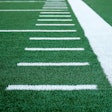The Youth Sports Safety Alliance, composed of more than 100 organizations committed to raising awareness, advancing legislation and improving medical care for young athletes, launched the first-ever "National Action Plan for Sports Safety" on Wednesday.
The six-page plan, finalized by attendees of the fourth annual Youth Sports Safety Summit in Washington, D.C., addresses leading health conditions and urges schools to adopt safety measures to protect students in four major areas: cardiac events, neurological injuries, environmental/exertional conditions and dietary/substance-induced conditions.
"High school athletes are the largest constituent of deaths in organized sports," Douglas Casa, a leading expert on exertional heat illness and chief operating officer of the University of Connecticut's Korey Stringer Institute, said Tuesday during a presentation at the summit, which was convened by the National Athletic Trainers' Association. As noted by Education Week reporter Bryan Toporek, Casa reasoned that's because more than 7.6 million young people participate in high school athletics.
At least 34 student-athletes died in 2012 - down from 39 in 2011 and 49 in 2010, and high school athletes suffer two million injuries every year, with 500,000 doctor visits and 30,000 hospitalizations, according to the alliance. Additionally, a 2011 study of U.S. high schools with at least one athletic trainer on staff found that concussions accounted for nearly 15 percent of all sports-related injuries reported to athletic trainers. Although various concussion laws are on the books in 43 states, Toporek reported that Chris Nowinski, co-founder and director of the Boston-based Sports Legacy Institute, opened the summit with this alarming statement: "There's no reason to believe that we aren't missing 90 percent of concussions."
Specifically, the National Action Plan implores all schools to: • Have a comprehensive athletic health care program and health care team. • Assure safe practice and play facilities that are regularly inspected and cleaned. • Provide an area in which injured athletes may be evaluated and treated, and where privacy of medical information is assured. • Have a plan for selection, fit and maintenance of athletic equipment. • Adopt injury and illness prevention strategies. • Inform athletes and parents of potential risks in sports as well as individual responsibility. • Assure that every student athlete has a pre-participation physical exam, including cardiac and concussion testing when appropriate. • Provide immediately available, properly trained health care professionals. • Inform parents of the school's emergency policies and procedures. • Provide automated external defibrillators in locations easily and immediately accessible and assure equipment is properly maintained and regularly inspected. • Train coaches and athletic officials in CPR and use of AEDs. • Adopt venue-specific emergency action plans that are routinely rehearsed with local emergency personnel. • Make coaches, parents and student-athletes aware of the potential problems related to the misuse of nutritional supplements, performance-enhancement substances and energy drinks. • Make school personnel aware of the psychosocial problems of student-athletes and assure referral to qualified healthcare professionals as appropriate. • Use established protocols for heat acclimatization, lightning, poor air quality and other environmental factors.
"Our prior summits provided the foundation for this National Action Plan - the critical next step that will help keep young athletes on the field and off the sidelines with chronic, catastrophic or fatal conditions," NATA president Jim Thornton said in a statement. "These conditions can be largely prevented, managed and treated if the right protocols are in place and properly trained medical personnel, including athletic trainers, are available to provide immediate care. Only 42 percent of U.S. secondary schools have access to athletic trainers."
Larry Cooper, chair of the NATA's Secondary School Athletic Trainers' Committee, predicts survey results that the association plans to unveil later this year will show that the 42 percent figure has easily been surpassed. Considering that the number of schools with athletic training access in Pennsylvania alone stands at 86 percent - with similarly high figures in such states as New Jersey, New York, Texas and Hawaii - "I'm holding out that we as a country are way above that 42 percent," Cooper told Athletic Business.
Nevertheless, it's obvious more strides need to be made in protecting high school student-athletes. That's why the Youth Sports Safety Alliance also is urging all states to adopt a Secondary School Student Athletes' Bill of Rights, which also was formally released Wednesday. It outlines essential elements that should be recognized by participants, parents, school administrators and other stakeholders; many of them are already standard practice at some schools, but the bill of rights still serves as a strong reminder of best practices. Some, such as the right to participate in an environment that finds "playing through pain" unacceptable, may also require a culture shift in high school sports.
The announcement of such major efforts comes less than a week after the Sports Legacy Institute and several current and former NFL players announced a new initiative calling for all state high school athletic associations to ban full-contact practices and games during the offseason. Right now, 29 state high school athletic associations allow full-contact drills during the offseason, and none impose any in-season limits. In contrast, last year the NFL banned offseason full-contact drills and limited them to less than one drill per week during the season.




































